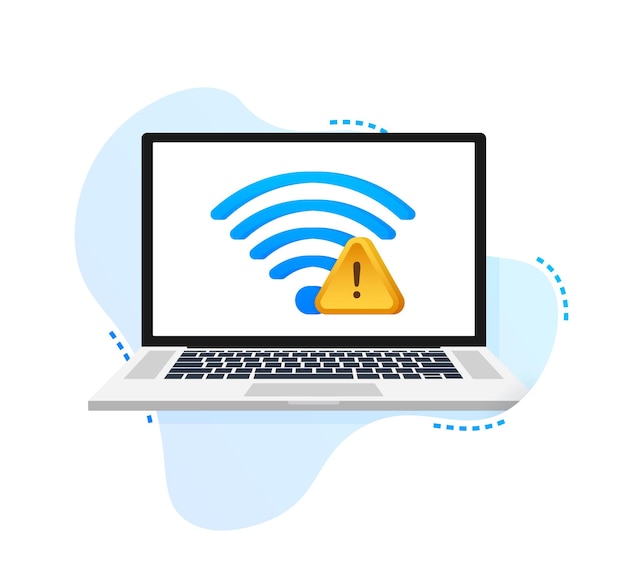The increasing number of hosted services has transformed the network and application’s infrastructure. As a result of these changes, customers have a wider range of alternatives than ever before. This has made them more dependent on reliable networks to keep these vital programs up and running smoothly. However, there are various network problems and solutions which can hamper your device as well as rectify those issues, highlighting why network security is important in ensuring the safety and performance of these systems.
The consequences of common computer network problems can be a terrible one. So it is advisable to invest in a reliable network infrastructure and services to guarantee the smooth operation of networks and applications.
In this blog, we will be learning all about common computer problems and solutions. Let’s discuss them in detail.
What Are Common Computer Problems?
Whenever you’re using a PC and it is not working properly, then there is a problem. Right from sticky keys to memory failure, issues with wired cabling can also lead the way to common computer problems. The first step in preventing this problem is to turn off your PC and turn it on again. The second method is to test the cables you are using as well before jumping into troubleshooting.
Definition of Network Issue
A network issue is a problem that affects a network’s performance, reliability, or security, and can arise during setting up a small business network. It can cause downtime, frustration, and loss in productivity for users and businesses. Some of the network issues are easy to fix, however others require more expertise and resources.
Types of Network Issue
- Bandwidth issues
- DNS issues
- Ip address conflict
- Connectivity issues
- Wifi obstruction
- Security issues
- High CPU usage issue
Below we have discussed all the computer problems and solutions.
High Bandwidth Usage
Bandwidth is referred to as the rate at which the information is sent by a network. It is represented in Megabits per second (Mbps). As bandwidth goes higher, more devices can connect with your network without slowing down the flow of data.
A traffic jam occurs in a network when one or more users, consume excessive bandwidth by downloading large files at once. High bandwidth utilization can result in network traffic jams as this could result in insufficient bandwidth for other departments of your network.
Some of the reasons which can result in high bandwidth utilization are:
- Huge downloads
- Latency
- Large apps
- Loss of packet
- Video streaming
- File sharing
Solution of High Bandwidth Usage
Network performance monitors (NPMs) can monitor the amount of bandwidth in use at a given time and point at the same location of any disruptions in data transfer. Some steps which you can take to reduce high bandwidth usage are:
- Find malware
- Use Quality of Service
- Tracking of high bandwidth hogs
- Limited VoIP network usage
DNS Issues
Domain Name System (DNS) is a directory that is for the internet which simplifies links domain names with its IP addresses. When you have a DNS problem, it generally means you no longer have a connection to the Internet.
DNS issues can arise due to various reasons, some of which are:
- Bad configurations
- High DNS inactivity
- High TTL values
- Network failures
Solution of DNS Issues
Users can rectify the DNS network issue by following the below steps:
- Flush DNS Cache: One can flush the DNS cache by using the command ipconfig/flushdns in the CMD for Windows and sudo discacheutil -flushcache; sudo killall -HUP mDNSResponder in the terminal app for MAC.
- Updating Network Drivers: Sometimes network driver’s new patches might be required for better functioning; therefore it is recommended to update the network drivers routinely.
- Change your Device’s DNS Server to a Different One: One can change the device’s DNS server such as Google DNS or Open DNS.
- Restart your Router: Reset your router to its default settings and reconfigure it with the correct DNS settings.
- Changing Firewall Settings: Sometimes firewall can act strictly and block some specific DNS addresses. However, it is advisable to allow access to DNS servers that you want to visit on your firewall settings.
IP Address Conflict
When two or more devices have the same IP address in the same network, known as an IP address conflict, it can disrupt communication. An IP address is used to communicate and receive data from a specific network. Each device has a unique IP address, and there are a total number of IPv4 addresses available.
If two devices are connected and have the same IP address, they cannot communicate properly and might cause network problems. Some of the reasons which can lead to IP address conflict are:
- A user manually assigns an IP address to a device already used by another device on the network.
- A device obtains an IP address from a DHCP server already used by another device on the network.
- A device has a static IP address that is not updated when it joins a different network.
Solution of IP Address Conflict
- Release and Renew the IP address: Using CMD in Windows and commands ipconfig/release and after that ipconfig/renew.
- Automatic IP address from DHCP Server: Configure your device to obtain an IP address automatically from a DHCP server instead of using a manual IP address.
- Reserving IP address: Reserve a specific IP address for your device on the router’s settings to prevent it from being assigned to another device.
Connectivity and Interference Issues in the Wireless Network
This is a constant network issue people have nowadays with their Wifi, even after they install Wifi. Wifi connectivity issues mean that your device cannot connect to the Wifi network. Wifi connectivity issues can be caused by various factors such as:
- Congestion
- Hardware or Software
- Interference
- Distance
Solution of Issues in the Wireless Network
- Restart the Router: Most of the time, various glitches can lead to Wifi connectivity issues, so it is advisable to restart the router.
- Forgetting the Wifi Network: Forget the wifi network and reconnect it with the correct password and settings.
- Changing Wifi Frequency and Channels: Sometimes interference can also lead to connectivity issues.
- Updating Device’s Firmware: Constantly update your device firmware and driver. Outdated drivers can lead to performance issues.
Wifi Interference
When your Wi-Fi signal from your wireless network is interrupted, this is called wireless interference in wireless networking services. Various signs that show network interference in the wireless network are:
- Even when physically bordering a wifi device, there is poor wifi signal strength
- Wifi connected users get a slower internet connection
- Wifi based file transfers are slow
- Unable to link to a wifi device despite being in close area of the router
- The Wifi connection drops every once in a while
Solution of Wifi Interference
Wifi interference can be solved by:
- Repositioning router
- Choosing the correct wifi channel
Causes of Common Computer Network Problems
Network issue can arise from the following:
- Hardware fault
- Software bugs
- Security settings such as VPN
- Overloaded networks
- Physical damage and Interferences
Common Computer Problems Troubleshooting Tips
When a network issue arises, you can use these basic troubleshooting tips:
- Checking Physical Connections: Ensure that all the cables are connected properly.
- Force restart the computer and the router.
- Ensure that all the network devices have the latest firmware updates.
- Double-check each setting on each device manually.
Key Takeaway
Network issue such as slow internet speed, dropping connections, IP conflicts, and hardware failure are normal in interfered performance with online activities. However, these issues can be resolved quite simply by troubleshooting methods such as restarting devices, checking the cables, updating to the latest firmware, and modifying network settings.
These can include regular maintenance, prevention through an iron wall for security measures, and browsing up-to-date resources to know what incoming threats are likely to occur so that more steps can be taken to avoid further disruption in the network. Consequently, understanding network problems and solutions around those pain points can keep users as efficient as possible with less downtime and more productivity on the network.





